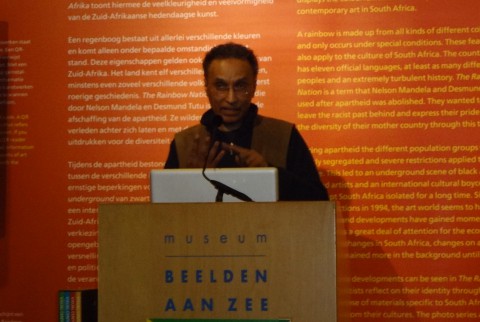Afgelopen zomer organiseerde Museum Beelden aan Zee ‘Rainbow Nation’, een tentoonstelling over hedendaagse Zuid-Afrikaanse sculptuur. In het laatste weekend werd het symposium ‘Mixing the Colors of the Rainbow’ georganiseerd, waarin hedendaagse Zuid-Afrikaanse kunst en kunstgeschiedenis werd besproken. Hoofd tentoonstellingen Dick van Broekhuizen leidde de avond in met een korte introductie op de tentoonstelling, waar het werk van drie generaties kunstenaars samenkomt. De werken worden gepresenteerd binnen een historische context, waarvoor gastcurator Annelies Brans-Van der Straeten gebruik maakte van het nieuwe encyclopedische overzicht van ‘Visual Century. South African Art in Context 1907-2007.’ Redacteuren van deze nieuwe publicatie Gavin Jantjes en Lize van Robbroeck spraken over de realisatie van dit overzichtswerk en verantwoorden hun methodologische keuzes. De Nederlandse kunsthistorica en curator Esther Schreuder gaf als derde spreker van de avond haar visie op Zuid-Afrikaanse kunst en kunstgeschiedenis.
Lees hier een verslag van het symposium in het Engels.

